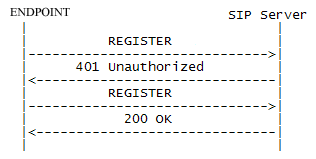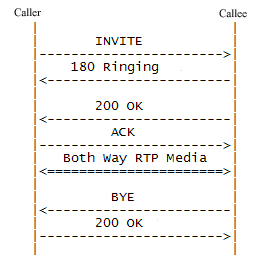SIP - How basically it works
Basics of SIP for VoIP.
The first thing to understand in SIP is how endpoints are located. SIP uses three primary address parts to locate an endpoint. The SIP URI is who you are in SIP, and does not relate to location. It's similar to an email address and actually looks like one. Typical SIP URI addresses contain phone numbers or even MAC addresses and could look like 4042265555@voipdomain.com, but could be anything@anydomain.net. The Contact Address is who and where you are. The registration process from an ATA or IP Phone includes a contact address would be 4042265555@192.168.1.120 where 192.168.1.120 is the IP address of the endpoint. The Media Address is where to receive the media or voice (RTP) and could be the same address as the endpoint, 192.168.1.120.
Registration is the first step in making VoIP work. The SIP registration process looks something like this.

Registration is the process in which the endpoint sends a SIP
REGISTER to the (SIP SERVER) or VoIP provider to let it know
where it is. The request includes the user's contact list. It's as
simple as a three step process staring with the User Agent
(endpoint) sending a request. Upon receipt the SIP SERVER
sends back a challenge and upon receiving back a correct response
(valid user ID and password) the SIP SERVER validates the user's
credentials and registers the user in it's contact database.
It then sends a 200 OK response which includes the user's current
contact list in Contact headers.
Registration will then update on a regular schedule with the UA
(User Agent)
or endpoint sending the list of addresses where the SIP server will
redirect or forward INVITE requests. Since the UA already
authenticated with the server, the UA supplies authentication
credentials with the request and is not challenged by the server.
SIP sets up and manages media sessions (typically RTP for voice) over IP, operating in a request-response model.
Setting up a call with SIP (Session Initiation Protocol)

In the above example of a very basic call between two SIP endpoints. The successful call shows the initial signaling directly between two UAs, Caller initiates the call by sending an invite to Callee. The exchange of media information results in the establishment of the voice session, after which the termination of the call results in both parties ready for another call. If you have not already done so, you may want to read about SIP basics.

